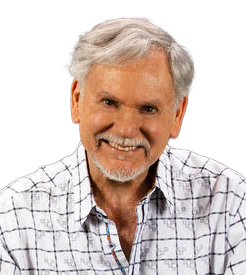(Excerpt from The Boy Crisis, pages 315-316)
A New Spin on ADHD
There is still much confusion about what the term ADHD really means. The name of the disorder itself—attention deficit hyperactivity disorder—is actually misleading and prevents many parents and adults from recognizing or relating to this condition. The common symptoms identified by the medical industry are often varied and even contradictory, and as we will explore later, many symptoms have yet to be defined. While some children with ADHD are distracted and disorganized, others are restless and impulsive, and some are both.
In most cases of ADHD there is not an actual deficit of attention at all. Instead, there is an inability to allocate attention appropriately. Children with ADHD that are inattentive, distracted, or “spaced out” find it hard to allocate their attention to what their teachers are saying; instead, they are stuck in a daydream. Other children with ADHD, those who are hyperactive, impulsive, or restless, are also unable to focus on the teacher but for different reasons. They are simply not that interested in what the teacher is saying. They would rather be somewhere else. They can’t sit still in class, but they can certainly sit still in front of a TV or video game.
Dr. Martha Bridge Denckla, a clinician and scientist at the Kennedy Krieger Institute and Johns Hopkins University, says she faces this confusion regularly from parents who bring their children to the ADHD clinic where she practices. “I am constantly having to explain to parents that ADHD is not a deficit in the sense of, say, a budget deficit or a thyroid deficiency, where you don’t have enough of something. Rather, it’s the control over attention.” A briefing paper of the Dana Foundation summarizes, “The question, Denckla says, is: ‘Where is the child’s attention being allocated? Is it where it needs to be to meet the demands of home, school, and society?’ . . .[i]
“Allocating one’s attention appropriately for success in school requires a degree of willful control—what might be thought of as will power—to turn away from a preferred activity and focus on an activity that may not be as compelling or immediately rewarding.”
People with ADHD have plenty of attention. That’s why they can play video games for hours, or get lost in their Legos, or devote endless attention to biologically stimulating activities like eating junk food, taking drugs, risk taking, watching TV, using digital tablets, and consuming internet pornography. They may have plenty of focus, but they are unable to easily shift their focus to less stimulating activities.
Over time, this inability to focus on less stimulating normal activities causes them to focus even more on activities providing extra stimulation. For example, children are easily distracted from cleaning their room or doing their homework by the increased pleasure that comes from the higher biological stimulation of playing video games. As their brains adapt to this increased stimulation, they disconnect further and further from their natural internal motivation to cooperate with and please their parents and teachers. In practical terms, children with ADHD may become more motivated to play video games and less motivated to earn their parents’ approval.
[i] Brenda Patoine, “What’s the Real Deficit in Attention Deficit/Hyperactivity Disorder?” Dana Foundation, August 31, 2010, http://dana.org/News/Details.aspx?id=43498.

Dr. Warren Farrell has been chosen by the Financial Times as one of the world’s top 100 thought leaders. His books are published in over 50 countries, and in 19 languages. They include The New York Times best-seller, Why Men Are the Way They Are, plus the international best-seller, The Myth of Male Power. His most recent is The Boy Crisis, (audio version) (2018, co-authored with John Gray). The Boy Crisis was chosen as a finalist for the Foreword Indies award (the independent publishers’ award).
Dr. Farrell has been a pioneer in both the women’s movement (elected three times to the Board of N.O.W. in NYC) and the men’s movement (called by GQ Magazine “The Martin Luther King of the men’s movement”). He conducts couples’ communication workshops nationwide. He has appeared on over 1000 TV shows and been interviewed by Oprah, Barbara Walters, Peter Jennings, Katie Couric, Larry King, Tucker Carlson, Regis Philbin, Dr. Phil, Jordan Peterson, and Charlie Rose. He has frequently written for and been featured in The New York Times and publications worldwide. Dr. Farrell has two daughters, lives with his wife in Mill Valley, California, and virtually at www.warrenfarrell.com.





